The Girl From Bastogne
The true story of Renée Lemaire, who gave her life with the wounded on Christmas Eve 1944.
A Light in the Darkest Winter
Snow was falling over Bastogne on Christmas Eve, 1944. The town was frozen, surrounded, and under fire. In a cellar on Rue de Neufchâteau, a young nurse named Renée Lemaire knelt beside rows of injured American soldiers. She had been tending them for days without sleep, her white apron stained with blood and soot.
When the German bombs struck that night, she refused to run. The building shook, then collapsed. Thirty men were killed. Renée died with them.
Today we reflect on Renée’s life and work, part of our ongoing series on real-life heroes who live out the virtues of the Christian faith.
The Girl From Bastogne
Renée Lemaire was born in 1914 in Bastogne, Belgium. Her family ran a small grocery store, and she was known in town as gentle, patient, and kind. She trained as a nurse in Liège, then returned home to work in a local hospital.
When the Second World War broke out, Renée was in her late twenties. Belgium was invaded, occupied, and scarred by years of hardship. Still, she carried on caring for the sick and elderly, finding purpose in service even as the world grew darker.
She was engaged to be married, and friends said she often spoke of the dress she would make from a white parachute, a common practice in wartime Europe, where silk was scarce. She never got the chance.
When the War Came Home
In December 1944, the war that had once seemed distant came crashing back to Bastogne. German forces launched a massive surprise attack through the Ardennes, trapping American troops and civilians alike.
The town became the center of the Battle of the Bulge, a brutal siege that lasted weeks. Shells rained down day and night. Food and medicine ran out. The temperature dropped far below freezing.
Renée didn’t flee. When she learned that an American field hospital had been set up near her home, she walked through the snow to volunteer.
The hospital was run by Dr. John Prior, a U.S. Army physician, with the help of the Belgian nurse Augusta Chiwy and a handful of medics. They worked out of an old building on Rue de Neufchâteau, using sheets and parachutes as bandages.
Renée arrived quietly and asked if she could help. Prior later said she worked “without complaint, even when the blood froze on her hands.”
A Week of Horror and Hope
The makeshift aid post quickly filled beyond capacity. The air was thick with smoke and the smell of antiseptic. Every hour, new stretchers came in from the front, men missing limbs, burned, or blinded.
Renée moved among them with calm purpose. She washed wounds, changed bandages, whispered prayers in French and broken English. Soldiers remembered her as a bright presence in the darkness, a young woman who smiled even when she was exhausted.
One survivor later said, “When you opened your eyes and saw her face, you thought you were already in heaven.”
On the morning of December 24th, she went to the church nearby to light a candle. The siege had lasted more than a week, and everyone hoped the fighting would ease for Christmas. It did not.
That night, as the town prepared for what little celebration they could manage, the German bombers returned.
The Last Hours
At around 8:30 p.m., a German aircraft dropped several bombs on Bastogne. One struck the first-aid post on Rue de Neufchâteau directly.
The blast tore through the building, igniting fuel and ammunition stored inside. Flames spread quickly, turning the cellar into an inferno. Dr. Prior, who was outside at the time, rushed back in, but it was too late. The structure had collapsed.
He later found Renée’s body among the ruins, along with those of about thirty American soldiers she had been treating. She had died with them, still at her post.
In his report after the battle, Dr. Prior wrote:
“Miss Lemaire was killed while doing her duty, caring for the wounded. She had been tireless and fearless, devoted to her work even as the bombs fell.”
The survivors buried her nearby. Her body was wrapped in the white parachute she had saved to make her wedding dress.
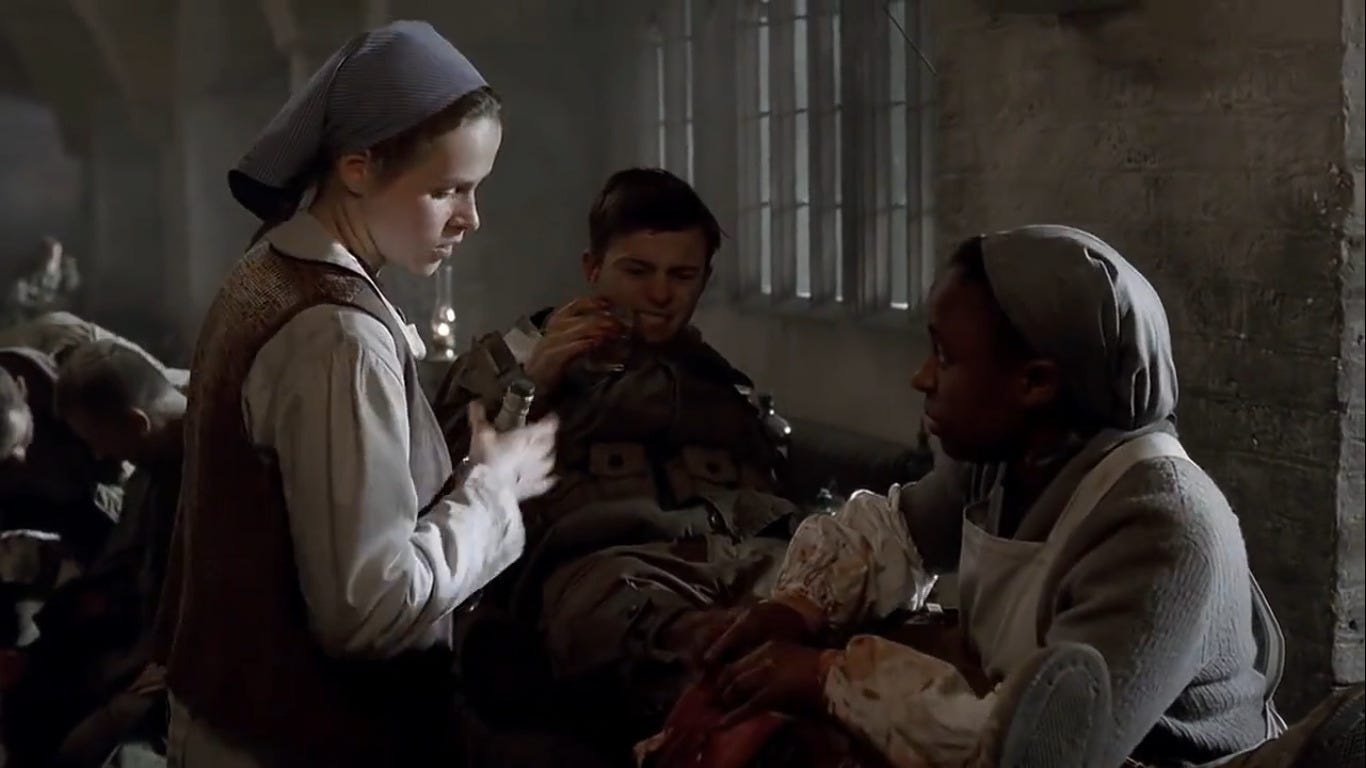
The Angel of Bastogne
Word of her death spread quickly through the 101st Airborne Division. Soldiers who had never met her spoke of “the Belgian nurse who died for us.” They began to call her “the Angel of Bastogne.”
For the Americans, she represented everything they were fighting for, kindness in a cruel world, courage in the face of fear, hope when there seemed to be none.
In the years that followed, her story became part of the legend of Bastogne. When the HBO series Band of Brothers recreated the battle, the character of Renée, the nurse who comforts Eugene Roe in the bombed-out aid station, was based on her. The scene where the hospital is destroyed on Christmas Eve is drawn directly from what happened that night on Rue de Neufchâteau.
It was the same attack that nearly killed Augusta Chiwy, who survived by chance while Renée did not. The two women had worked side by side for days, caring for the same men, sharing the same candlelight and exhaustion. When Augusta was found decades later, she spoke of Renée with tears in her eyes:
“She was so young, so good. She stayed when she could have gone. She was like a sister to me.”
Memory and Silence
After the war, Bastogne was rebuilt. Streets were cleared, graves were moved, and life slowly returned. But for a long time, Renée’s story remained local, remembered mainly by veterans and townspeople.
Belgium was full of war heroes, and history books had little space for a quiet nurse who died without a uniform or a medal. Yet to those who knew the truth, her sacrifice spoke louder than any decoration.
In 1946, the United States Army awarded her a posthumous citation for bravery, recognizing that she had died “in faithful service to the wounded.” In Bastogne, her name was engraved on a small memorial near the site of the explosion.
Visitors still leave flowers there every December 24th.
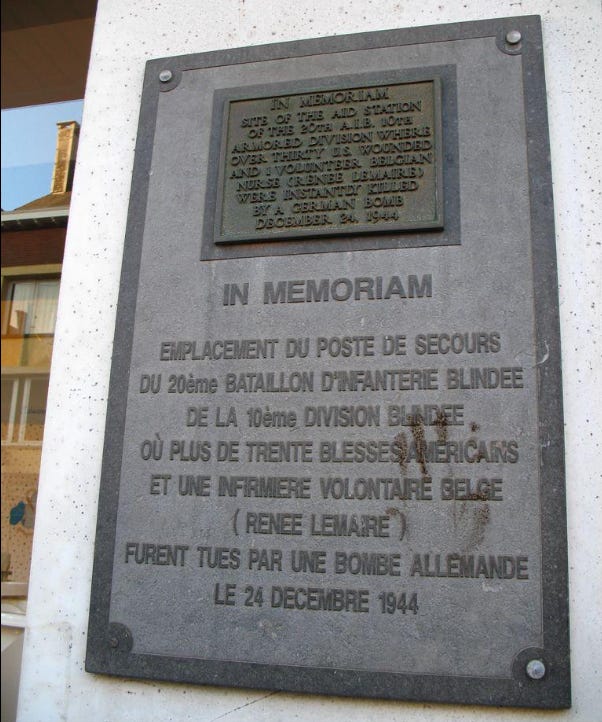
Why Her Story Matters
In every generation, the world produces people like Renée Lemaire, those who refuse to look away from pain, who give of themselves even when there is nothing left to give. Though they may die their name lives on.
Today, when travelers visit Bastogne, they can still find the small plaque that bears her name. It stands quietly outside on Rue de Neufchâteau, near where the aid post once stood. People leave candles there in winter, small flames against the cold.
The Woman Behind the Legend
It is easy to turn people like Renée into symbols. “The Angel of Bastogne” sounds almost like a figure of myth instead of a living woman. But she was real. She laughed, she made plans, she dreamed of a future that never came.
The white parachute she had hoped to turn into her wedding dress became her shroud. A symbol of purity and loss, of love transformed into sacrifice.
It is not idolatry to honor her but an act of justice to lift up true role models like Renée, in an age that often celebrates the wrong people in the name of progress.
God bless.
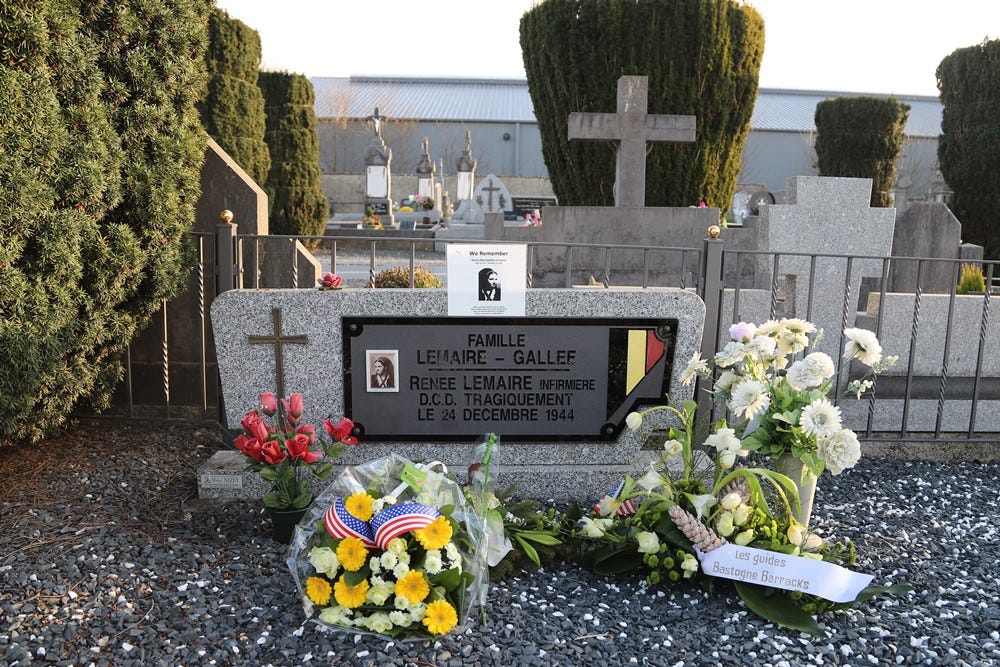



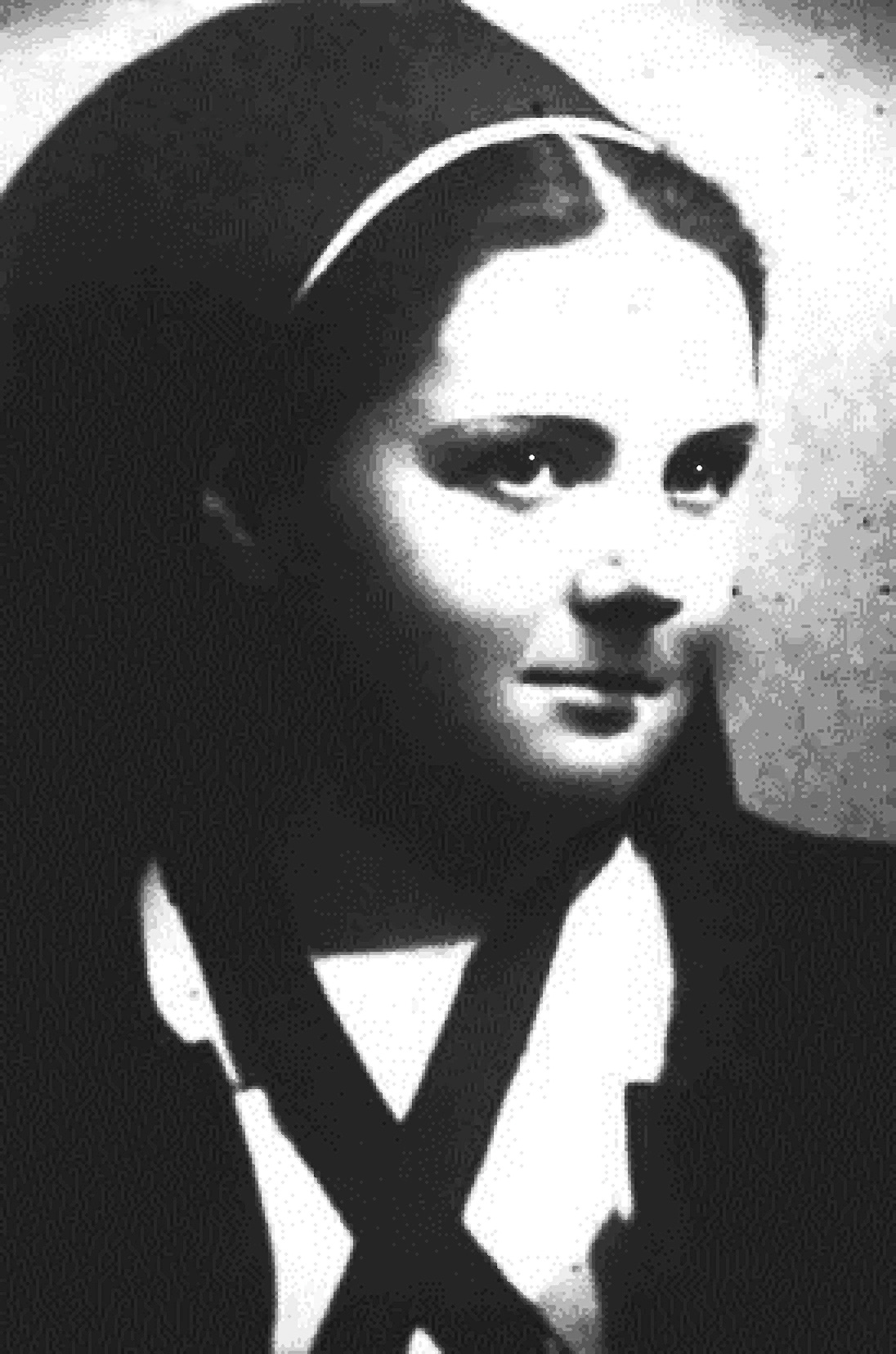
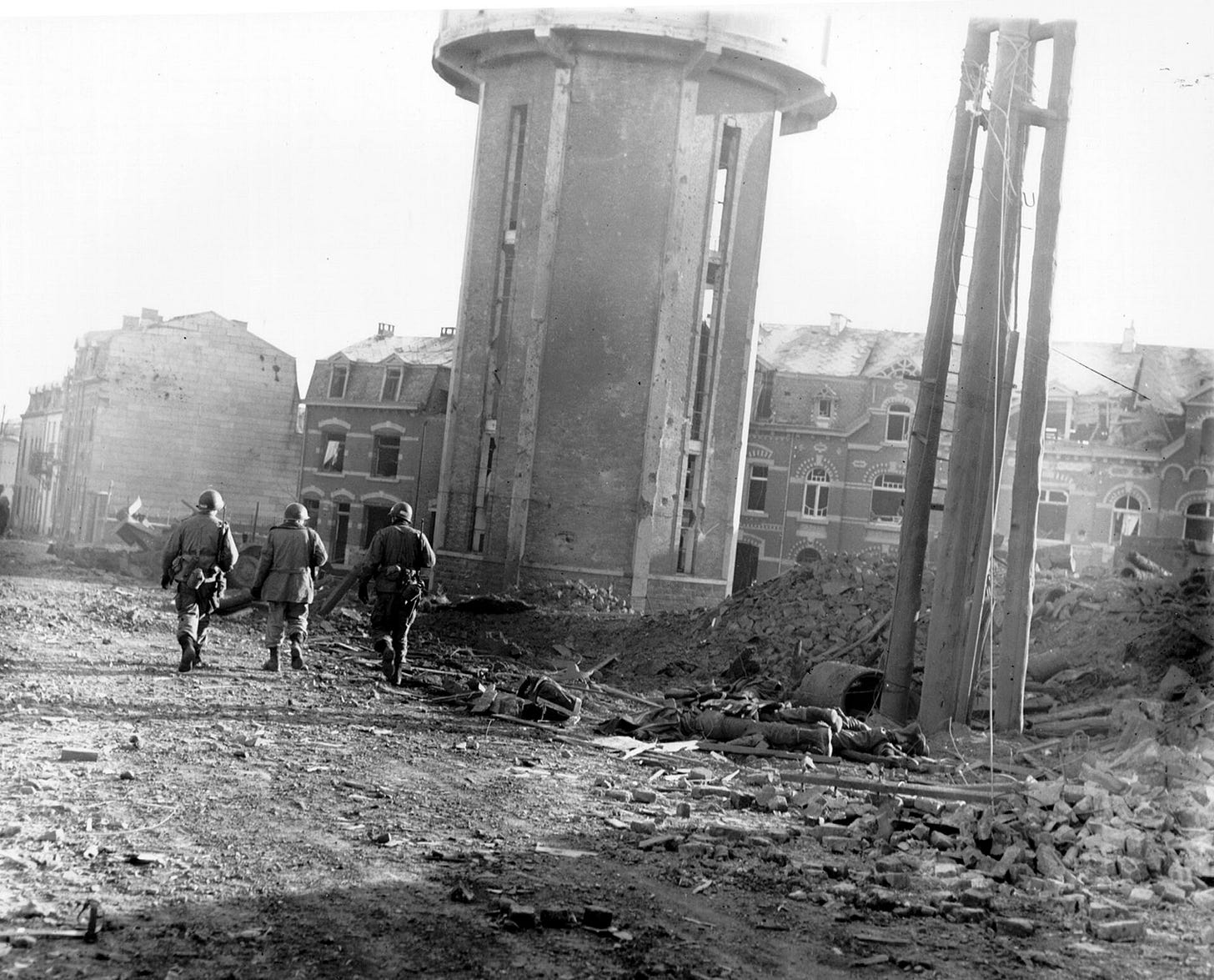
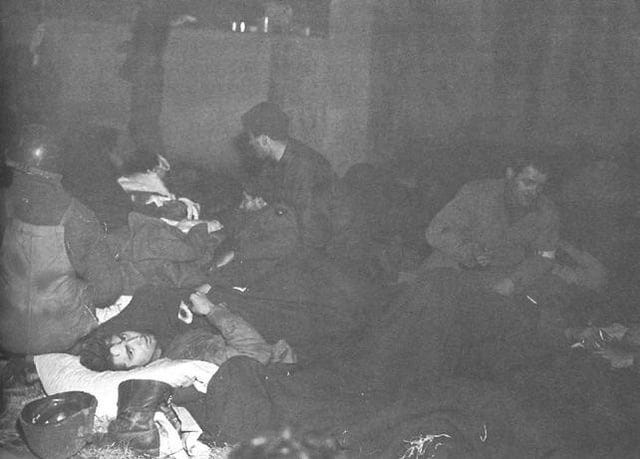
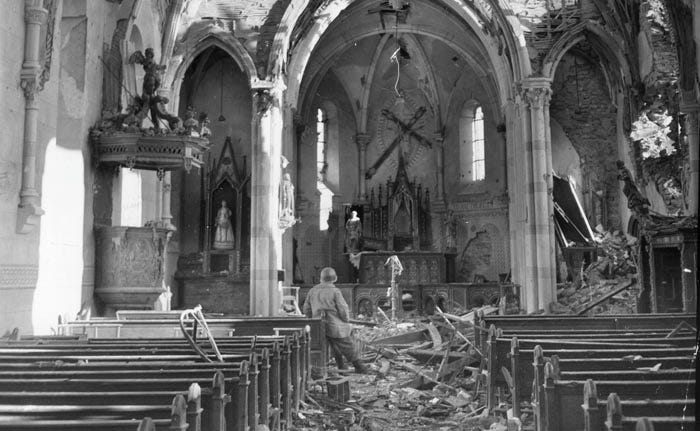
This woman's already a saint in my mind and surely has a special place in heaven.